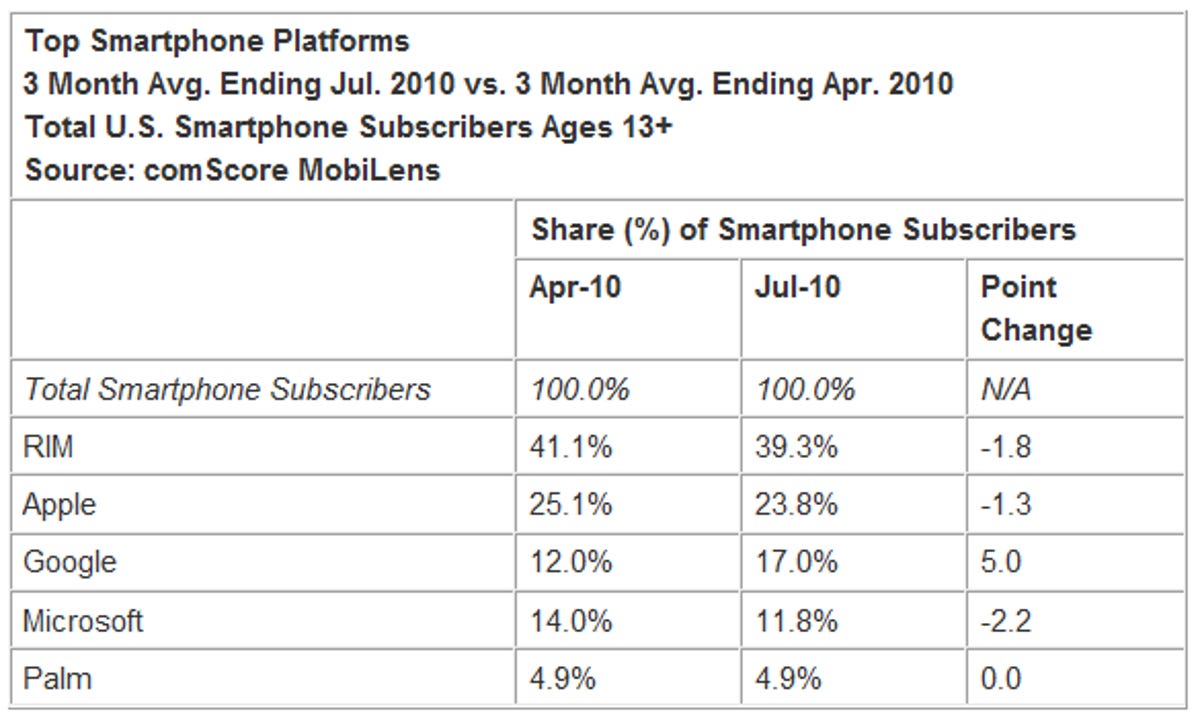Android continues to grab greater chunks of the U.S. smartphone market while its competitors watch their share shrink or stagnate.
Though still No. 3, Google’s Android platform saw its market share climb 5 percentage points to win 17 percent of all U.S. smartphone subscribers for the three months ending in July compared with the prior three months, market researcher ComScore reported yesterday.
This contrasts with No. 1 Research In Motion, which saw its share drop 1.8 points to 39.3 percent. No. 2 Apple also witnessed a drop in share, losing 1.3 points to take home 23.8 percent of the market.
Rounding out the top five smartphone platform makers were Microsoft, which saw its share fall by 2.2 points to 11.8 percent, and Palm, whose share remained flat at 4.9 percent.

ComScore
The explosive growth of Android phones at the expense of the competition has been noted by several market researchers. Recent reports from Gartner and IDC both forecast Android’s market share as surpassing Apple’s by 2014. Another study from Quantcast has also tracked the gains in Android against Apple.
Although rivals may have shed market share to Android, overall smartphone platforms are still scooping up more subscribers in total as demand continues to surge. For the three months ending in July, 53.5 million people in the U.S. owned a smartphone, an 11 percent jump from the prior three-month period, ComScore said.
In a broader look at the wireless segment, ComScore also ranked all mobile phone makers in the U.S. market. Samsung took the top spot with a 23.1 percent of the market for the period, a gain of 1 percentage point. In second place was LG with a 21.2 percent share (down 0.6 point), followed by Motorola with a 19.8 percent share (down 1.8 points), RIM with 9 percent (0.6 point), and Nokia with 7.8 percent (down 0.3 point).
What are people doing with their mobile phones these days besides talking? Texting was the most popular activity, according to ComScore, with 66 percent of mobile users sending text messages on their devices. That was followed by Web browsing (33.6 percent), using a downloaded app (31.4 percent), playing games (22.3 percent), accessing social networks and blogs (21.8 percent), and listening to music (14.7 percent).



